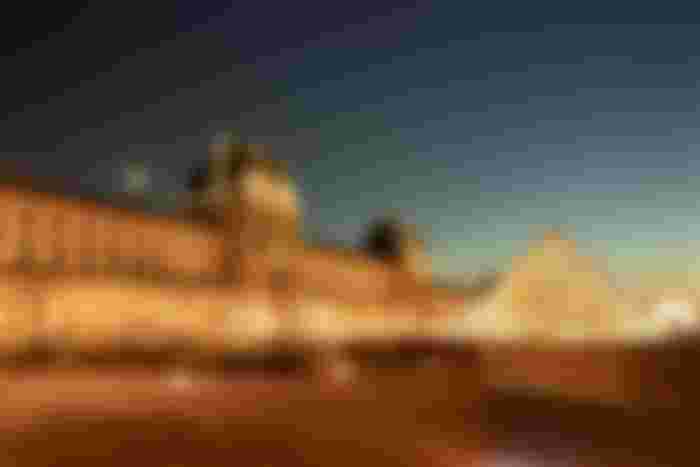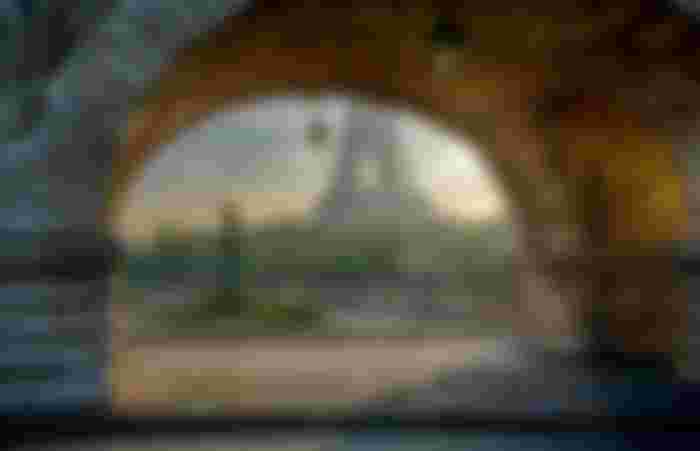Paris is the center of France and is located in the country's north-central region. By before 7600 BCE, people were living on the current city site, which is located along the Seine River some 233 miles (375 km) upstream from the river's mouth on the English Channel (La Manche). The contemporary metropolis has extended well beyond both banks of the Seine, starting on the island (Île de la Cité).
Paris is located in the heart of the fertile agricultural region known as the Paris Basin, and it is one of the eight départements that make up the administrative territory of Île-de-France. It is by far the most important commercial and cultural center in the country. The city has a total area of 41 square miles.

The city's characteristics
For ages, Paris has been one of the most important and appealing cities in the world. It is admired for the opportunities it provides for business and commerce, education, culture, and entertainment; its gastronomy, haute couture, artwork, literature, and intellectual community, in particular, are well-known. Paris has kept its status as a center for education and intellectual pursuits, earning the moniker "the City of Light" ("la Ville Lumière") throughout the Enlightenment period.
The location of Paris at a crossroads of both water and land routes important not only to France but also to Europe has had a long-term impact on its development. The original site on the Île de la Cité was chosen as the capital of the Parisii tribe and territory under Roman authority in the 1st century BCE. By 494 CE, the Frankish king Clovis I had conquered Paris from the Gauls and proclaimed it his capital. The preeminence of Paris was firmly established under Hugh Capet and the Capetian dynasty, and Paris became the political and cultural center as modern France took shape. France has historically been a highly centralized country, with Paris becoming synonymous with a powerful central government.
The Seine divides historical Paris into three distinct areas. The Île de la Cité, in its heart, is the seat of ecclesiastical and temporal authority (the word cité refers to the ancient city's nucleus). The Left Bank (Rive Gauche) of the Seine has traditionally been the center of intellectual life, while the Right Bank (Rive Droite) has long been the center of the city's economic activity, but in recent decades, the lines have blurred. The confluence of all of these duties in the heart of France, and subsequently, in the heart of an empire, created a vibrant environment. However, in this context, opposing powers have generated an emotional and intellectual milieu.

Throughout its decades of expansion, Paris has mostly maintained its original circular shape. Its bounds have expanded to encompass the surrounding towns (bourgs), which are typically constructed around monasteries or churches and are frequently the site of a market. The city grew primarily eastward from the mid-14th to the mid-16th centuries; since then, it has grown primarily westward. It is divided into 20 arrondissements (municipal districts), each with its own mayor, town hall, and unique characteristics. The numbering starts in the center of Paris and spirals out to the far east in the shape of a snail shell. The first (premier), second (deuxième), third (troisième), and so on are how Parisians refer to the arrondissements. The huge urban agglomeration is the result of adaptation to urbanization's difficulties, such as immigration, housing, social infrastructure, public utilities, suburban development, and zoning.
City site
The Seine, Oise, and Marne rivers run through Paris, which is located in the heart of the Île-de-France area. The city is surrounded by large beech and oak forests, which are known as the "lungs of Paris" because they help to filter the air in the heavily industrialized region. The city is compact; no corner is more than 6 miles (10 kilometers) from the square in front of Notre-Dame Cathedral. It sits in a depression created by the Seine, and the city's boundaries have always been defined by the surrounding heights. The elevation ranges from 430 feet (130 meters) in the north to 85 feet (26 meters) in the southwest, near the butte of Montmartre.
The Seine runs through the city center and 10 of the 20 arrondissements for around 8 miles (13 km). It enters the city from the southeast, flows northwest, and then gradually turns southwest, finally leaving Paris from the southwest. As a result, the east bank of the stream becomes the north bank and the west bank becomes the west bank, prompting the Parisians to adopt the simple, constant designations of Right Bank and Left Bank (when facing downstream). Specific locations, on the other hand, are frequently identified by arrondissement or quarter (quartier).

The river is lined by cobblestone quays ornamented with trees and shrubs at water level, some 30 feet (9 metres) below street level (at least on those segments not changed into expressways). Another line of trees slopes toward the water from the street level. The retaining walls between the two levels are usually made of massive stone blocks and are pierced by openings left by water gates for old palaces or inspection ports for subways, sewers, and underpasses, and some are pierced by openings left by water gates for old palaces or inspection ports for subways, sewers, and underpasses. The walls are shawled in ivy at various locations.
Ten Fascinating Facts About Paris
After being completed for the 1889 World Fair, the Eiffel Tower was planned to be a temporary structure that would last for 20 years.
Originally known as "Lutetia," Paris was a Roman city.
Paris is said to have only one stop sign in the entire city.
A Paris flat was left uninhabited for 70 years under lock and key, but the rent was paid every month; when the renter died, a painting by Boldini worth more than $2 million was discovered there.
At least three reproductions of the Statue of Liberty may be found in Paris. The most well-known of them stands on an island in the middle of the Seine, facing a statue of her sister in New York.
Emmanuel is the name of the Notre Dame Cathedral's major bell, which weighs over 13 tonnes.
The shortest rues – or streets – in Paris are Rue des Degrés, which is only 5.75 meters long and located in the 2nd arrondissement.
During World War I, the French army was the first to adopt camouflage, which is derived from the French phrase "to make up for the stage." The army began wearing camouflage in 1915.
In December 1895, French brothers Auguste and Louis Lumière presented the first public exhibition of a film. They showed ten films, each lasting approximately 50 seconds, using their invention, the cinématographe.
Unless they take the elevator, visitors to the Eiffel Tower must climb 1,665 stairs to the summit! The Basilica of the Sacré-Cur may be reached in about 270 steps.
Image Sources:
Image by Edi Nugraha from Pixabay
Image by Pete Linforth from Pixabay
Image by Jean-Philippe Fourier from Pixabay
Image by Rodrigo Pignatta from Pixabay



I will love to visit one day with all these that you have said about it.